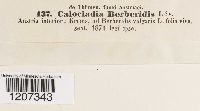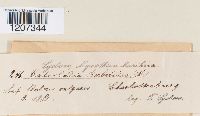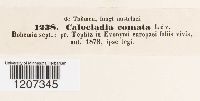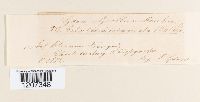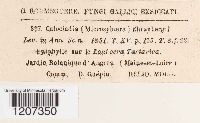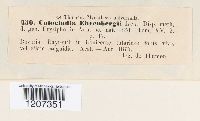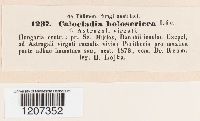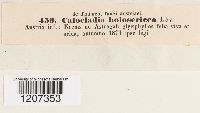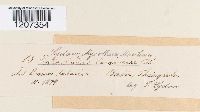University of Minnesota
http://www.umn.edu/
612-625-5000
http://www.umn.edu/
612-625-5000
Minnesota Biodiversity Atlas
Bell Museum
Dataset: MIN-Fungi
Taxa: Calocladia
Search Criteria: excluding cultivated/captive occurrences
1
Page 1, records 1-12 of 12
Bell Museum fungi | |
MIN:Fungi | 8953[1207343]Thumen 1371871-09-00 |
MIN:Fungi | 8952[1207344]Sydow, P. 2461881-09-00 |
MIN:Fungi | Calocladia comata (Wallr.) Lév. 8954[1207345]Thumen 12381873-00-00 Czech Republic, Bohemia, Teplitz |
MIN:Fungi | Calocladia divaricata (Wallr.) Lév. 8955[1207346] 767 |
MIN:Fungi | Calocladia divaricata (Wallr.) Lév. 8957[1207347]Thumen 1401871-09-00 |
MIN:Fungi | Calocladia divaricata (Wallr.) Lév. 8956[1207348]Sydow, P. 3371882-08-00 |
MIN:Fungi | 8958[1207349]Thumen 1351871-10-00 |
MIN:Fungi | 8959[1207350]Guepin, D. 827 |
MIN:Fungi | 8960[1207351]Thumen 4501875-00-00 Germany, Bavaria |
MIN:Fungi | 8965[1207352] 12371873-00-00 |
MIN:Fungi | 8966[1207353]Thumen 4591871-00-00 |
MIN:Fungi | 8967[1207355]Sydow, P. 831879-10-00 Germany |
1
Page 1, records 1-12 of 12
Google Map
Google Maps is a web mapping service provided by Google that features a map that users can pan (by dragging the mouse) and zoom (by using the mouse wheel). Collection points are displayed as colored markers that when clicked on, displays the full information for that collection. When multiple species are queried (separated by semi-colons), different colored markers denote each individual species.
